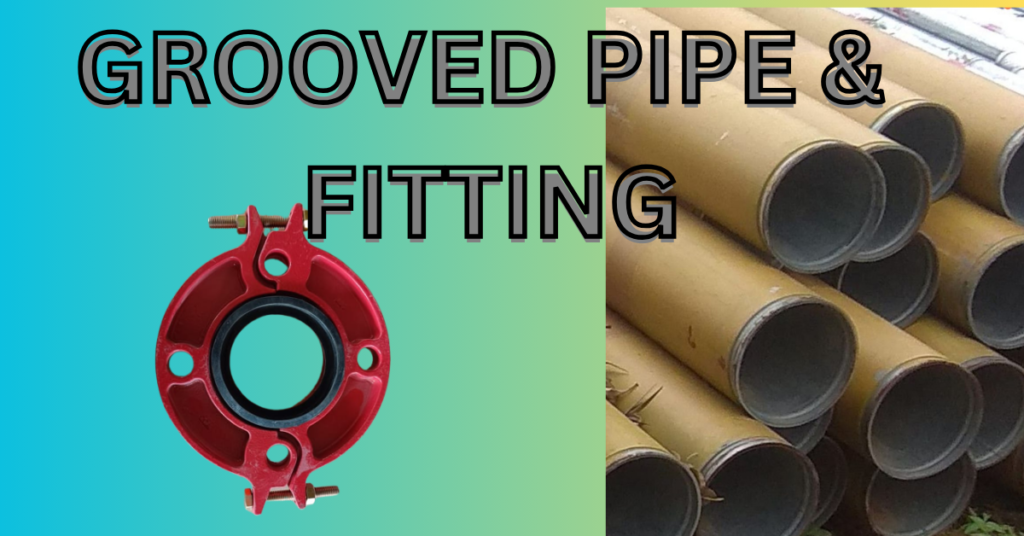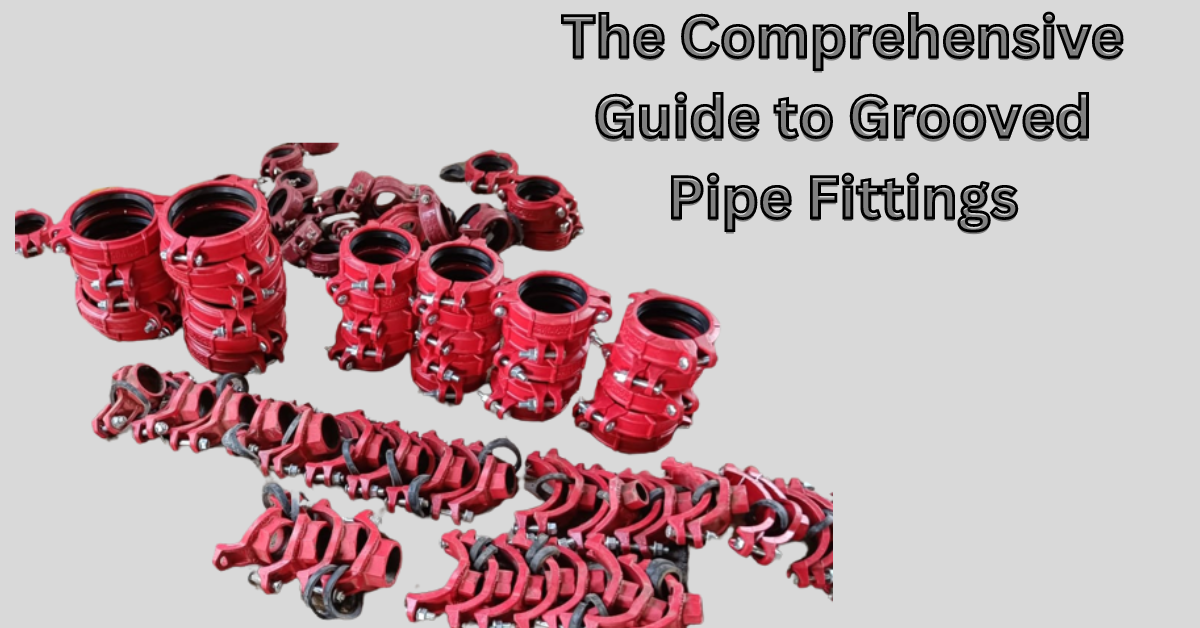The Comprehensive Guide to Grooved Pipe Fittings: Origin, Use and Advancements
Howdy! Whether you’re a newbie to the piping industry or a seasoned professional, grooved pipe fittings are a topic that’s sure to pique your interest. What? You’re not feeling excited about grooved pipe fittings? Stick with me, pal. I promise you’ll be humming to the groove by the end of this guide.
The Role and Importance of Grooved Pipe Fittings in Industrial Processes
Like a carefully crafted puzzle, industrial processes require multiple pieces to seamlessly connect and function as a whole. Enter, grooved pipe fittings, the unsung heroes of these operations. Whether it’s in mining, oil refineries, or wastewater treatment, these bad boys are all but indispensable.
Why, you might ask? Well, these fittings can be easily adjusted or disconnected, meaning they make the maintenance process a king’s dream. Plus, they reduce installation time and cost, even in cramped industrial sites (think of them as life-size Lego bricks in an industrial context!).
The Basis of How Grooved Pipe Fittings Work
To understand how grooved pipe fittings work is to appreciate the symphony of construction. Consider a pipe with two ends, each having a groove. Now imagine a rubber gasket, fitting snugly within these grooves. Lastly, picture two metal housings enclosing this gasket and you’ve got the setup for grooved pipe fitting.
When the fitting is tightened, the gasket compresses between the pipes. This creates a leak-proof seal, transforming separate pipes into a cohesive, reliable system. It’s almost poetic, the way it all comes together, don’t you think?

Brief History of Grooved Pipe Fittings
Here comes the geeky part – the history. The grand idea of grooved pipe fittings was introduced by the Victaulic Company in the 1920s. Not looking to rewrite history, these folks ingeniously came up with a concept that has stood the test of time. Using the same fundamental principles, today’s grooved pipe fittings are more efficient, reliable, and easy to use.
Section 1: Understanding Grooved Pipe Fittings
Definition and Basic Mechanism of Grooved Pipe Fittings
Imagine if Sherlock Holmes were to write a dictionary entry. Intriguing, right? Let’s define grooved pipe fittings in a similar way:
“Grooved Pipe Fittings: [noun] Mechanical devices used to connect pipes with a grooved end, forming a leak-proof seal aided by a gasket and metal housings. The mechanism relies on the compression of the gasket inside the grooved end when the metal housing is tightened. Also called – The Mcgyvers of the Piping Industry.”
read more-
And that, my dear Watson, is how grooved pipe fittings work.
Components of Grooved Pipe Fittings: Groove, Gasket, Housings
Think of grooved pipe fittings as an Oreo cookie. The groove and the housing are like the chocolate cookies enclosing the delicious gasket (the cream). Together, they create a treat for our infrastructure systems.
But let’s demystify these components, shall we?
Groove: The groove in the pipe end, like a well-practiced salsa step, aligns perfectly with the gasket and housing, allowing them to connect seamlessly.
Gasket: This flexible, ring-like component is the Picard to the pipe fitting’s Starship Enterprise, sealing the groove and preventing leaks.
Housing: Metal housings act like impeccable bodyguards, enveloping the gasket and providing structural stability.
Difference Between Grooved Fittings and Other Pipe Fittings
Grooved pipe fittings are like that quirky cousin at family gatherings who’s doing things differently yet brilliantly. Unlike their threaded or welded counterparts, they offer flexibility, ease of installation, and faster assembly. Not to mention, they require fewer man hours (a boss’s dream come true!) and handling heavy pipes is a lot easier (a worker’s relief!).
Section 2: Types of Grooved Pipe Fittings
Elbows: Definition, Purpose, and Applications
Elbow fittings in grooved systems are like trusted GPS navigation, guiding the fluid in the right direction. They have angles, typically 90° or 45°, allowing the pipes to turn corners. Ever wonder how water gets upstairs? Thank an elbow fitting!
Couplings: Explanation, Use Cases, and Benefits
What’s a pipe system without a solid coupling? Just a bunch of loose ends. Like a solid handshake, couplings join pipes together to form a continuous line of piping. They’re especially useful where regular maintenance is required. Think of couplings as your reliable next-door neighbor that you can always count on.
Tee Joints: Understanding, Function, and Advantages
Tee joints, aptly named for their T-shape, are the Aragorn of the piping world, managing directional changes like a true hero! They’re employed to either combine or split flow, making them essential for any interconnected and elaborate piping scheme.
Section 3: Material Selection and Sizing for Grooved Pipe Fittings
Choosing the right material for your grooved pipe fittings is like selecting the perfect coffee beans for your morning brew—it makes all the difference.
Considerations in Selecting Materials for Grooved Pipe Fittings
Choosing a material for grooved pipe fittings is akin to choosing your BFF. You need the one that’s strong (carbon steel, anyone?), resistant to corrosion (hello, stainless steel), or lightweight and yet sturdy (sounds like ductile iron).
The material choice also depends on your application. Will it primarily carry water, oil, or gas? What’s the temperature condition? And yes, do consider your budget too—though, remember, my friend, good things aren’t always cheap!
Importance of Proper Sizing for These Fittings
How would you feel if you wore shoes either too big or small for you? Uncomfortable, right? The same goes for the incorrect size of fittings in your pipe system—things just won’t work as expected. Therefore, accurate measurements for your pipe’s diameter, wall thickness, and the fitting size are critical for the system to function smoothly.
Guidelines for Proper/Durable Material Selection and Sizing
The key to choosing suitable material and size lies in understanding your system’s ties—requirements and compatibility. Ensure you know:
The type of fluid it will transport
The range of temperatures it will be exposed to
Environmental conditions (corrosive, humid, dry, etc.)
The more accurate you are with your pipe system’s needs, the better your fitting material and size selection will be.
Section 4: Installation and Maintenance of Grooved Pipe Fittings
Step-by-Step Guide on the Installation Process of Grooved Pipe Fittings
Installing a grooved pipe fitting might seem as complex as assembling an IKEA furniture, but trust me, it isn’t. Here’s a brief rundown:
First, you create a groove at the end of each pipe. Use a roll grooving or cut grooving machine (it’s not as scary as it sounds, I promise).
Pop the gasket in the groove. Think of it as putting a CD into its case (oh those good old times!).
Fit the two housing solutions over the gasket and align them perfectly with the grooves.
Now, let’s put on the screws into the housings and tighten them. Here’s where you feel like a pit crew in a car race!
And voilà! You’ve formed an airtight seal.
Regular Maintenance and Inspection Practices to Ensure Optimal Operation
Like your favorite vintage car, grooved pipe fittings require regular check-ups to continue running smoothly. This involves inspecting the gasket for wear and tear, checking for rust on the housing, and ensuring the fittings are tightened to just the ‘Goldilocks’ level – not too loose, not too tight.
Common Problems and Their Solutions in Grooved Pipe Fittings
Grooved pipe fittings are not invincible—they too face their set of challenges. For example:
Corrosion: We all hate rust, don’t we? If there’s any sign of corrosion, replace the part immediately.
Leakage: This mostly occurs from wear and tear of gaskets. Inspection and replacement are your saviors here.
Loose Fittings: This could result in a pop-out scenario. Regular tightening and care can stop this from becoming a catastrophic (and wet) situation.
Section 5: Advancements in Grooved Pipe Fittings
Latest Advancements in the Manufacturing Process of Grooved Pipe Fittings
Just like how cellphones have come a long way since the massive bricks of the ’80s, so have our grooved pipe fittings. Advances in materials engineering have resulted in ultra-durable alloys and rust-resistant coatings. We’ve also got computer-based design and manufacturing tech, leading to more precise fittings and, let’s not forget, 3D printing—it’s like sci-fi merging with plumbing!
How Technology is Influencing the Use and Efficiency of These Fittings
Remember when we hoped for self-cleaning houses (still do, honestly)? Just like that fantasy, tech developments contribute massively to the plumbing world too. For instance, advanced monitoring systems enable real-time pipe health monitoring, making maintenance a walk in the park. Even the installation process has received a high-tech makeover with laser-guided measuring and cutting. Pretty cool, huh?
Future Trends in Grooved Pipe Fittings
If we could predict the future, we’d definitely not be in this line of work. Jokes aside, consider AI, better manufacturing methods, and advanced materials as crucial drivers for the future of grooved pipe fittings. With trends focusing on increasing efficiency, reducing costs, and enhancing durability, we may even see grooved pipe fittings in household piping applications in the not-so-distant future!
Conclusion
Recap of the Significance of Grooved Pipe Fittings in Various Industries
Just as a mammoth jigsaw puzzle is incomplete without every piece in place, so are our industrial processes without grooved pipe fittings. They facilitate smooth operations across various applications—be the hero in every war against leaks, accommodate bends in pipes, and connect lines with their reliable seal.
Reiterate the Considerations in Material Selection, Sizing, and Maintenance
Remember, choosing the correct material and size is like picking a superhero suit—it has to fit the mission’s specific needs. Regular maintenance, like your annual health check-ups, ensures the longevity of the system.
Discuss the Evolution and Future of Grooved Pipe Fittings
Grooved pipe fittings have come a long way from their beginnings in the 1920s. With advancements in technology and focussed R&D, they continue to push their own boundaries and shape the future of the industry.
FAQs
What are the advantages of using grooved pipe fittings over traditional pipe fittings?
Grooved pipe fittings can be your superhero in crisis. Their superpowers include faster and easier installation and disassembly, minimal noise and vibration transmission, and flexibility in movement and alignment. Bioshock’s Big Daddy would totally dig these!
How do you ensure correct sizing of grooved pipe fittings?
It’s as crucial as adding the right amount of sugar to your tea. Measure and take into account the pipe’s diameter, wall thickness, and the fitting size. Remember, precision is key!
What materials are most commonly used in the manufacture of grooved pipe fittings?
Metals like ductile iron, stainless steel, or carbon steel usually get the precedence due to their strength, resistance to corrosion, and durability. Choose the material like Batman choosing his gadgets: wisely, and based on the mission.
Can grooved pipe fittings be used in all types of piping systems?
Mostly, yes! The suitability of these fittings largely depends on the type of fluid transported, environmental conditions, and the pressure in the system.
What are the most common issues faced during the installation or maintenance of grooved pipe fittings?
Installation can sometimes become a wrestling match with incorrect pipe end preparation or misalignment of the gaskets. As for maintenance, leakage due to gasket damage, corrosion of the housing, and loose fittings are common woes. Stay vigilant!
What is expected from future trends in grooved pipe fitting technology?
Futurists predict advancements in material science, automation, AI integration in monitoring systems, and enhanced manufacturing methods as part of the future trends. Expect these fittings to glide into domestic use too, while they continue to dance on the industrial stage.
So there you have it, folks! The intricate world of grooved pipe fittings, demystified. From its role, down to its future trends, we’ve covered it all. You can now go brag your newfound knowledge to your friends. Remember, in a world full of straight pipes, be a grooved fitting – flexible, strong, and ready for anything!
